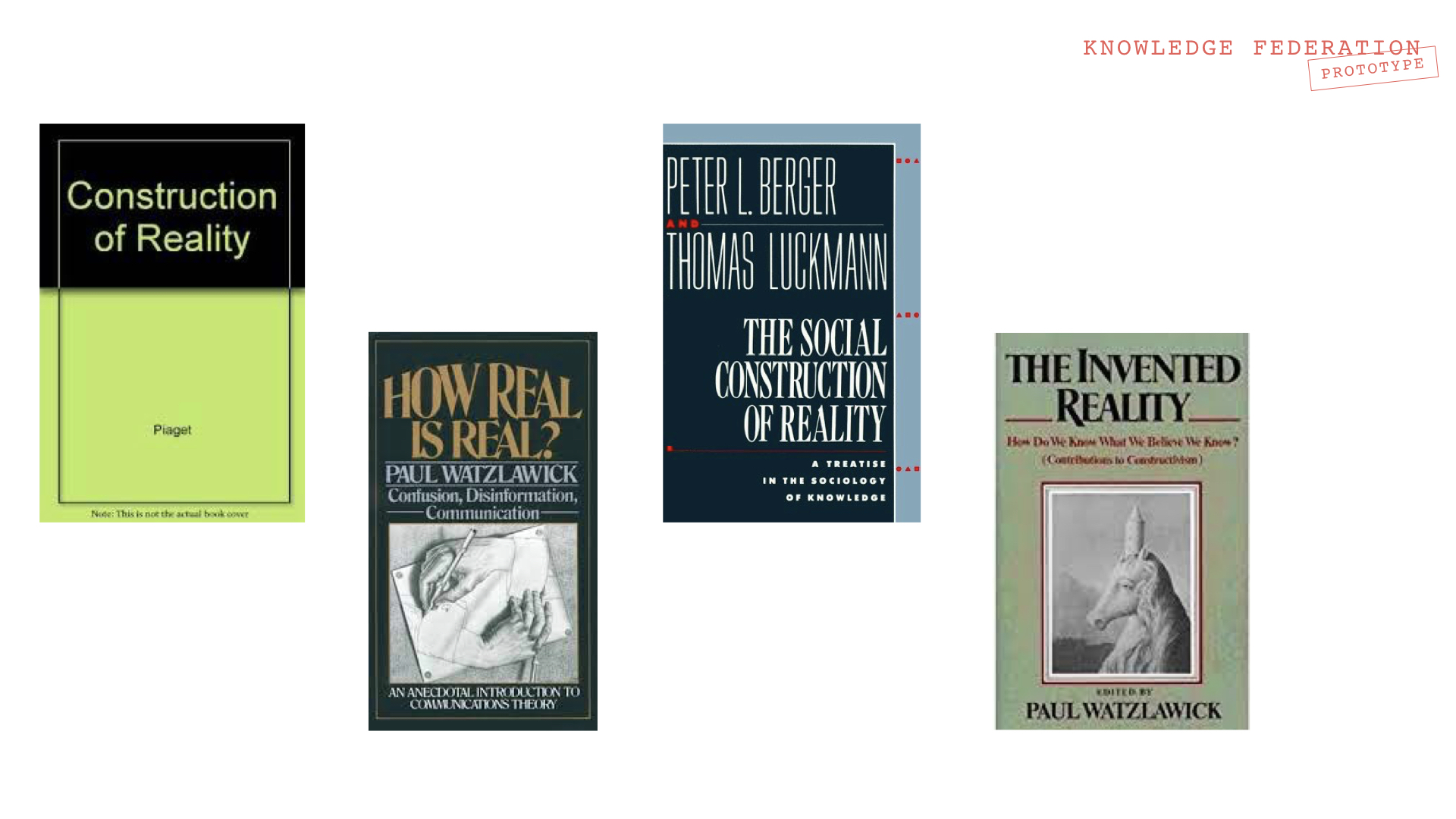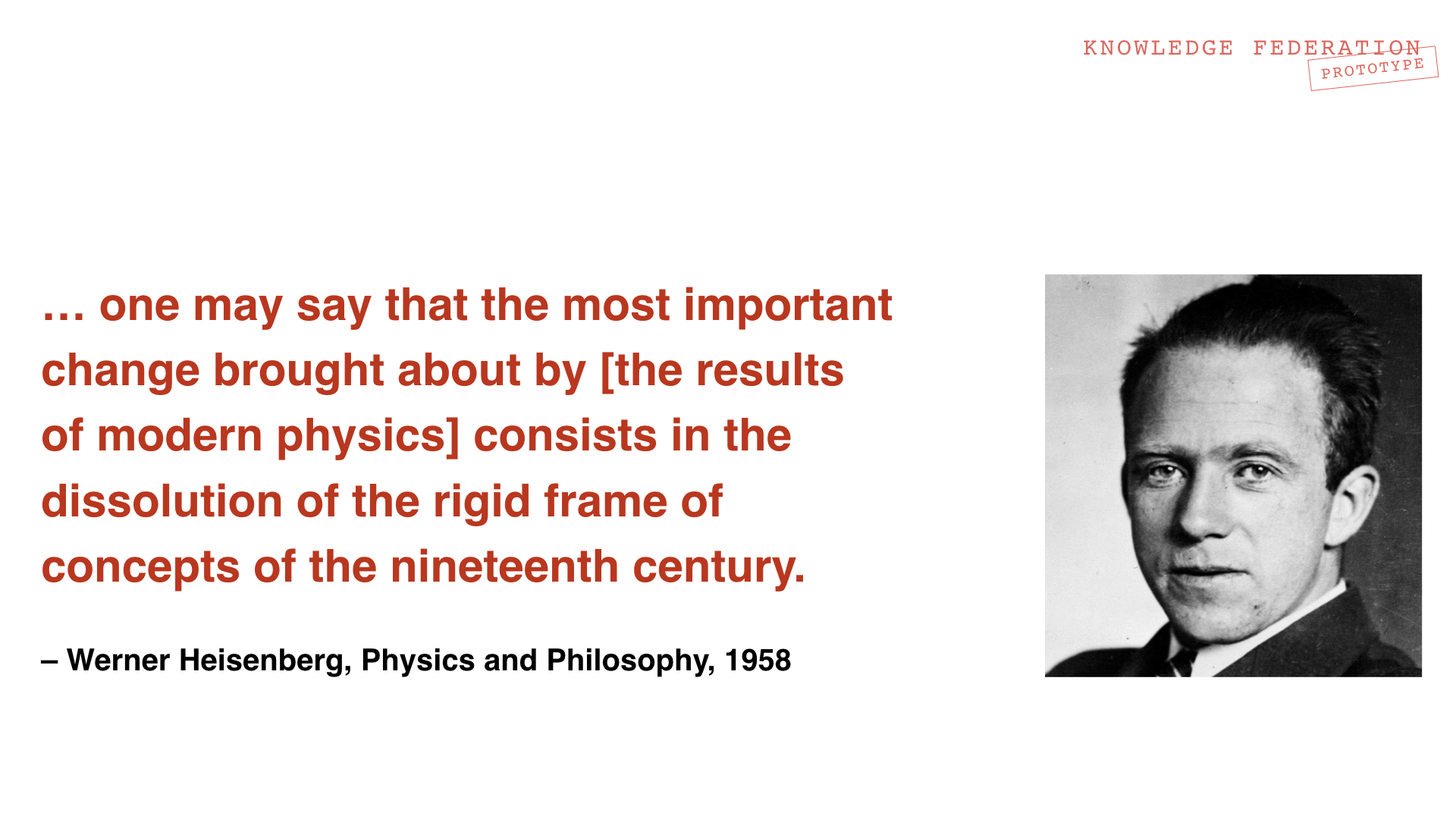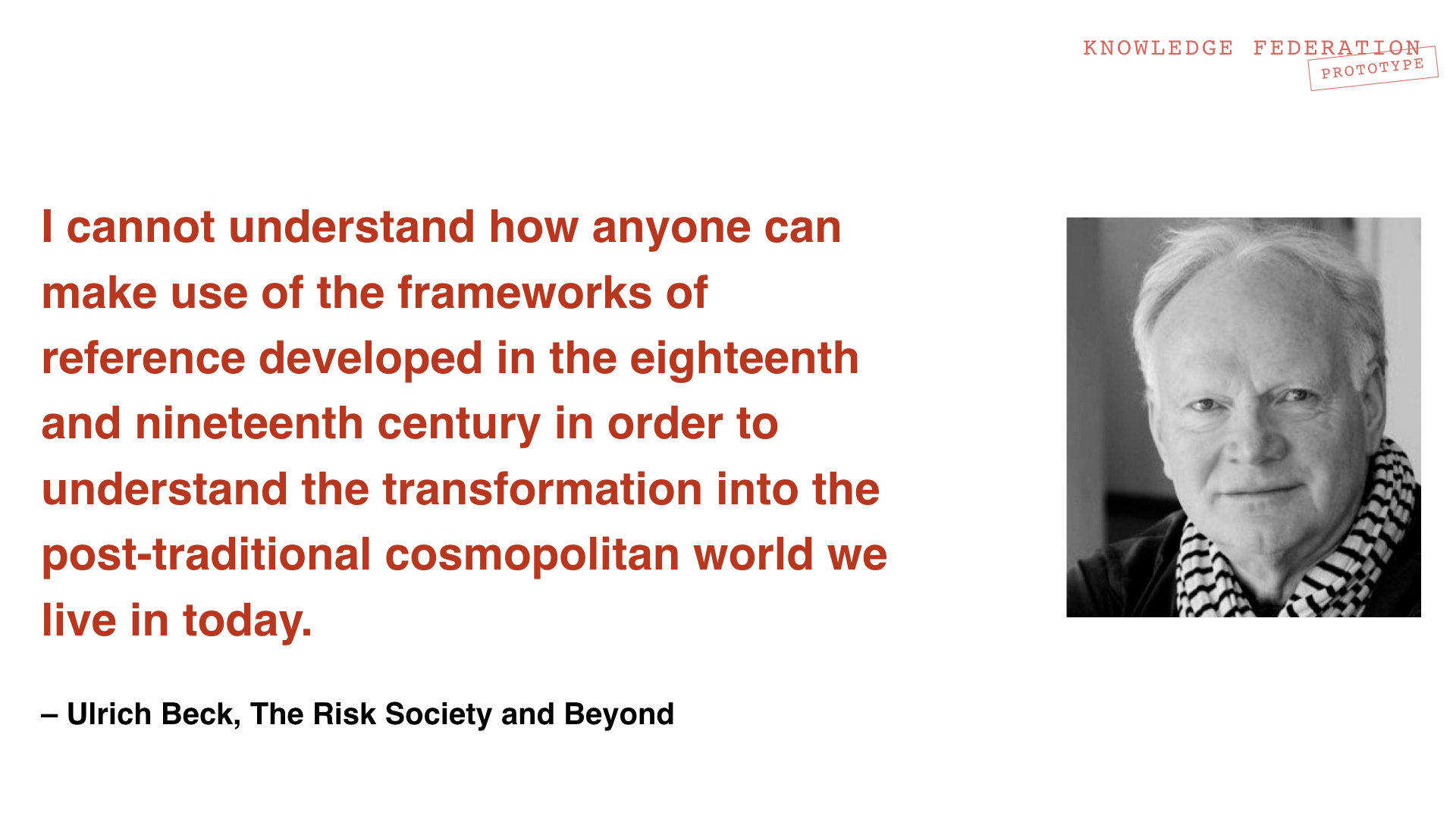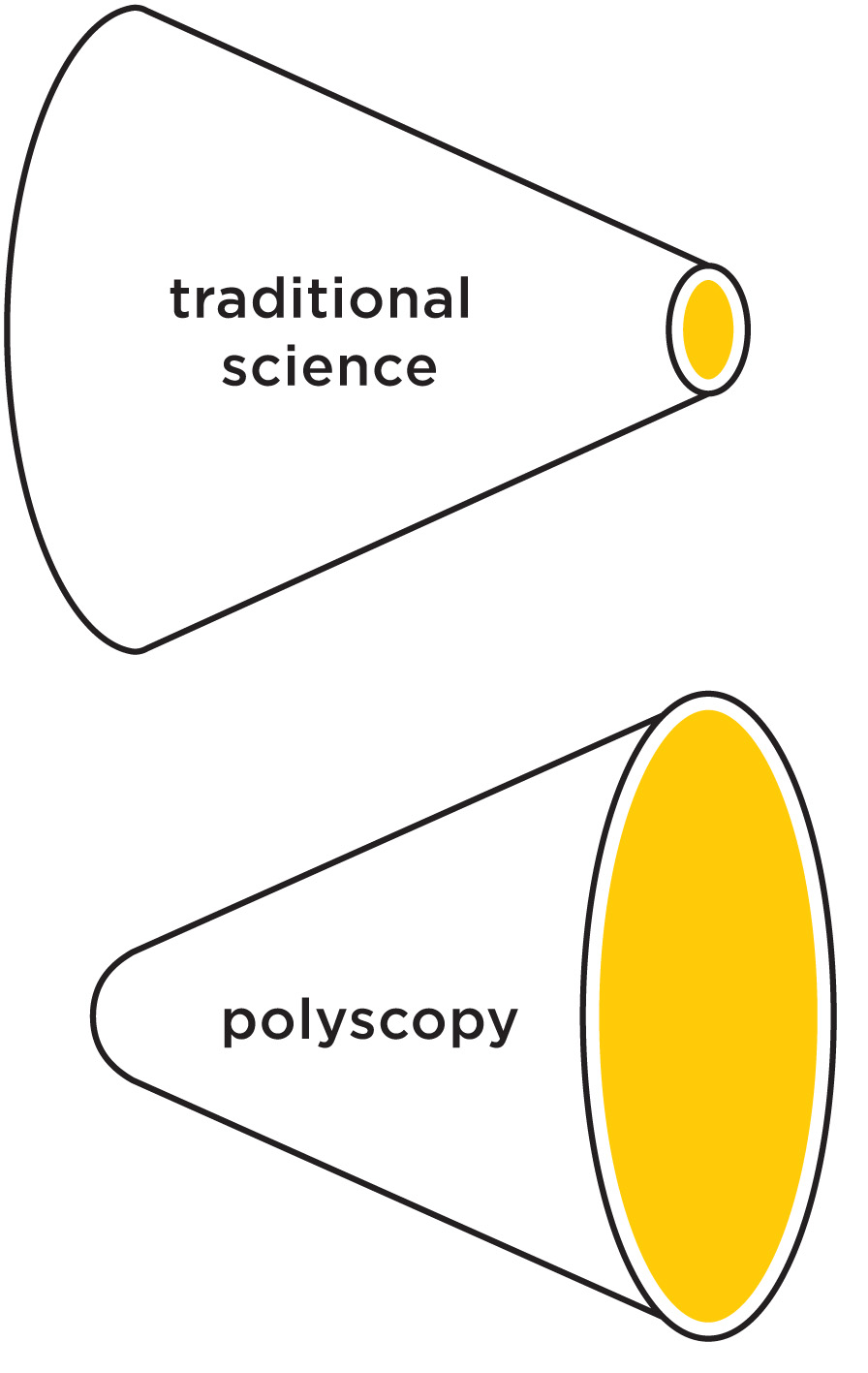Holotopia: Narrow frame
Contents
- 1 H O L O T O P I A: F I V E I N S I G H T S
- 2 Narrow frame
H O L O T O P I A: F I V E I N S I G H T S
Narrow frame
The approach to truth and meaning that our general culture adopted from the 19th century science constituted a <narrow frame</em> through which we are looking at the world. Being narrow, it has worked well for some purposes—notably for developing science and technology; and it's been devastating for others—notably for preserving and developing culture.
The gravest problem with science in that role, however, is that it constitutes a 'hammer'—a fixed tool applicable to only certain kinds of themes and issues. Hence we have a vast army of scientists creating information there where the 'hammer' applies; and leaving the vast areas where information is urgently needed in the dark.
XXXXXXX
Science became "the Grand Revelator of Modern Western Culture" through a series of historical accidents. A consequence is that our most trusted way of exploring the world is a "narrow frame"—well suited for some purposes (such as developing our understanding of the natural world, and technology), but poorly for others (notably for developing humans and culture).
An even larger problem, however, is that science constitutes a 'hammer'—a specialized set of tools, which make us favor disciplinary interests, and ignore the needs of people and osociety.
Stories
Narrow frame in physics
For quite awhile, the "classical" approach in the sciences (to provide "mechanisms behind" or causal explanations to observable phenomena) worked so well, and were so superior to what existed earlier, that it was natural to adopt them as a general way to truth and meaning—in academia (see our commentary of Stephen Toulmin's book "Return to Reason" here), and beyond. But then it turned out that this approach to knowledge was too narrow even for explaining the physical phenomena!
We adopted this keyword, the narrow frame, from Werner Heisenberg, who in "Physics and Philosophy" (subtitled "Revolution in Modern Science") observed that the way of looking at the world that our general culture adopted from the 19th century physics constituted a "rigid and narrow frame", which was damaging to culture. Heisenberg explained why the results in contemporary physics amounted to a scientific disproof of the narrow frame—and why he considered that to be perhaps the main gift that modern physics gave to humanity (see our summary here).
Click here to hear Heisenberg say that
Most people believe that the atomic technique is the most important consequence. It was different for me. I believed that the philosophical consequences from atomic physics will make a bigger change than the technical consequences in the long run. (...) So we know because of atomic physics and what was learned from it that general problems look different than before. For example, the relationship between science and religion, and more generally, the way we see the world.
Here you'll find a couple of epistemological notes by Einstein, which will also be relevant.
Narrow frame in humanities
In the humanities and in philosophy it was amply confirmed that the ways of looking at the world we have inherited from the past will not serve us in this time of change. See our comments that begin here.
Our perception organs construct meaning
What we call "reality" is constructed by our sensory organs and our culture—and this construction is the clue for going further. The point will be to claim it back from the power structure, and make it the theme and the prerogative of real knowledge work (i.e. of academia).

<p>We represented them by Maturana, Piaget and Berger and Luckmann—see our commentary that begins here.<p>Having lost its bearings in philosophy, "reality" as preoccupation migrated to biology, psychology and sociology—where the mechanisms of reality construction could be studied. </p>
Ideogram
The Polyscopy ideogram, with which we summarize the narrow frame insight, points to the key idea: Once we understood that the methods developed in the sciences are just human-made ways of looking at things or scopes—it became natural to adapt them to the purposes that need to be served; notably to the purpose of seeing things whole.
Keywords
Polyscopy and methodology
We use the word methodology for both a study of method and for the method that results from such a study. This usage is similar to how we handle epistemology.
polyscopy is both a pseudonym we use, in colloquial speech and in application, for the Polyscopic Modeling methodology—which is a generalized "scientific method", whose purpose is to provide information according to contemporary needs of people and society.
Scope and scope design
Perspective and gestalt
A gestalt is the meaning of it all. The core goal of polyscopy is to use scope design to correct the perspective, so that a gestalt that is appropriate to the situation at hand can be found, expressed and acted on.
Pattern and ideogram
In the generalized science, as modeled by polyscopy, the pattern and the ideogram roughly correspond to the mathematical function and the corresponding symbolic representation. "E = mc2" is a familiar example. By why use only mathematics? The patterns and the ideograms generalize the approach to science completely; they can be, in principle, anything that works...
Prototypes
Polyscopic Modeling methodology
In our prototype of the holoscope and the holotopia, the Polyscopic Modeling methodology models a generalization of the scientific method, which suits both.
By using truth by convention, we create keywords and more generally scopes, and overcome the narrow frame issue. The methodology itself has a definition, which is a convention.
The goal is, of course, an academic way to create truth and meaning, which is completely general and hence can be directed by scope design (we liberate our attention from the dictates of the tool, and direct it where it is most needed).
By convention, the meaning in this approach to knowledge is the "aha" we experience when our model sufficiently fits the data. It is a mnemonic device—a way to abstract, to "hide" a massive amount of data, and "export" meaning.
Truth (we avoid this word) is, by convention, a result of knowledge federation, which is a deliberately designed and evolving social process. Through it, we maintain coherence, relevance, and whatever else is needed to assign value to pieces of information. (Value, however, is not fixed, but a value matrix, see the corresponding prototype in Applications.)



